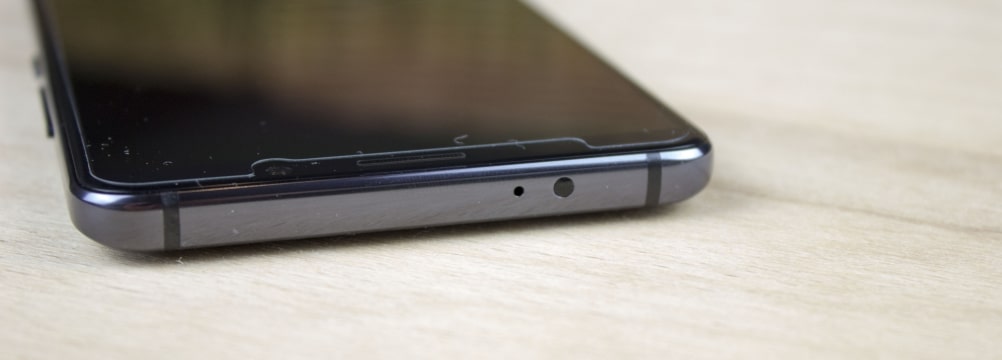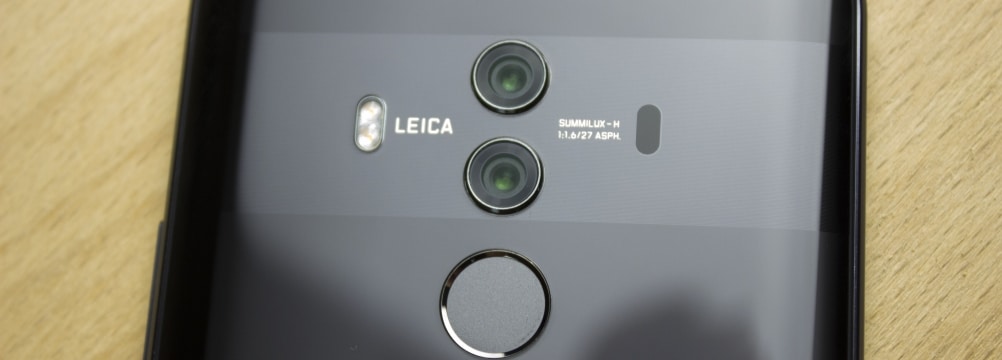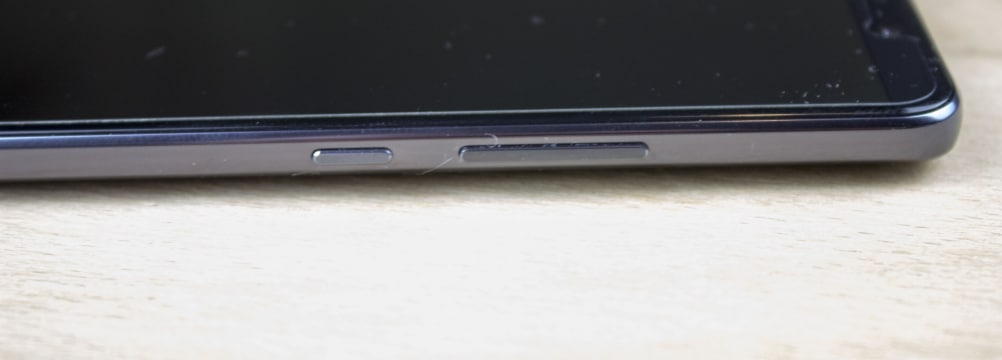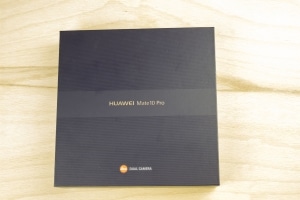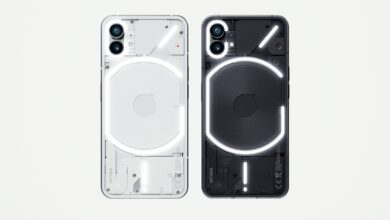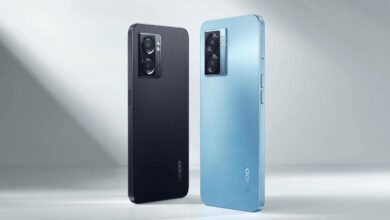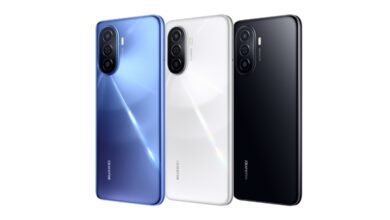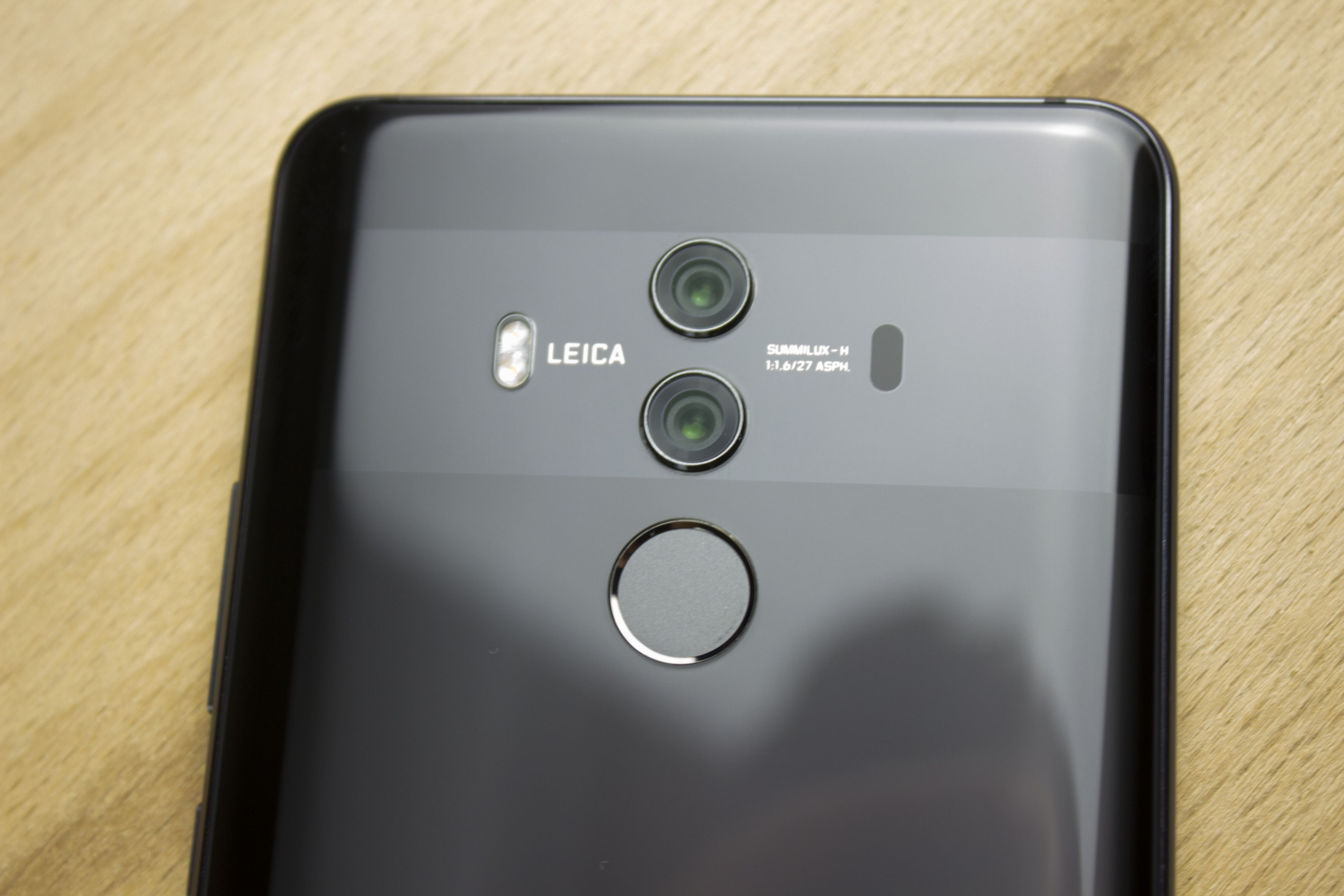
The Chinese smartphone manufacturer Huawei presented its new flagship Mate 10 Pro a few weeks ago in Munich. In this test you can find out whether the new device can continue the success of the Mate series and whether it can keep up with the competition.
Design and Workmanship
In terms of design, the Mate 10 Pro differs greatly from its predecessor, the Mate 9. Whereas the Mate 9 still had an aluminium back, Huawei now has a glass back. This is slightly bent at the edges and feels quite high quality. However, it is also very sensitive to fingerprints. It’s nice that the Mate 10 Pro does without the plastic inlays that were necessary for the antennas in the previous model.
On the other hand, little has been done on the layout of the back: At the top center there are two camera lenses, which Huawei has again developed with camera specialist Leica. To the left is the dual flash and to the right the autofocus laser. The fingerprint sensor is located under the cameras.
If you look at the front of the Mate 10 Pro, several new features stand out. The main difference is certainly the new display format of 18:9, which has become more and more popular since the Samsung Galaxy S8. The screen edges have also shrunk considerably. Especially above and below you can see the difference to the Mate 9 very clearly. The ratio of screen to chassis size is almost 82%, making it relatively manageable despite the large 6-inch display. People with small hands should nevertheless check before buying whether it is not too big.
The workmanship of the Huawei Mate 10 Pro is very good. The gap dimensions are very small and the on/off button, as well as the volume rocker, have a clearly defined pressure point. Only the edges of the cameras are somewhat sharp-edged. This should not be a problem in everyday life, but was partly solved more beautifully by other manufacturers. Overall, however, the workmanship is impeccable, as usual from Huawei. Due to its weight, the Mate 10 Pro feels very high quality, but it is not too heavy.
Included in the delivery are, in addition to the device itself, a SuperCharge charger including USB-C cable, a transparent plastic case, a manual, sim card tool, USB-C headphones and USB-C to jack adapter.
Display
In contrast to the Mate 10 (without “Pro”), which is not available in Germany, the Mate 10 Pro has only a FullHD resolution (2,160 x 1,080 pixels). This results in a pixel density of 402 ppi at a screen size of 6 inches. In practice, however, the screen resolution is not negative. Huawei himself justifies the decision for a FullHD display with the battery life, whose biggest enemies are actually resolution and brightness of the display.
Following the trend of recent months, Huawei is now also using an 18:9 aspect ratio for its flagship, enabling more screen space overall with the same width of the device. This is an important purchasing factor, especially for people with small hands. As is typical for OLED displays, the colors are very strong and rich in contrast. The viewing angle stability is also very good, the image only gets a slight blue veil if the tilt is very strong.
The maximum brightness of the screen is fine, but rather average. In my opinion, Huawei makes a good compromise regarding the battery life of the display. The FullHD resolution is not really noticeable in practice, after all the pixel density of the Mate 10 Pro is well above that of its predecessor.
Hardware
In the Huawei Mate 10 Pro, Huaweit’s new Kirin 970 processor works, which is supported for the first time by an NPU (Neural Workmanship Unit) in the calculation of neural networks, an important technology of artificial intelligence. The processor has access to 6 GB of RAM. In addition there is 128 GB main memory, which unfortunately are not expandable. With 4,000 mAh, the battery again turns out to be generous, as one is accustomed to from the Mate devices.
| Display | 6 inch FullView, OLED, 18:9 |
| Resolution | FullHD (2160 x 1080 pixels) – 402 ppi |
| Memory | 128 GB |
| RAM | 6 GB |
| Processor | Huawei Kirin 970 4*Cortex-A73 2.36GHz + 4*Cortex-A53 1.8GHz + i7 Co-Processor |
| GPU | ARM Mali-G72 MP12 |
| Dimensions | 154.2 x 74.5 x 7.9 mm |
| Weight | 178 g |
| Rear camera | 20 MP Monochrome+12 MP RGB MP Leica Dual Camera, Summilux-H 1:1.6/27 ASPH, OIS, Dual Flash, 2x Hybrid Zoom, 4K Video recording |
| Front camera | 8 MP FF, f/2.0 |
| Battery | 4,000 mAh |
| Connectivity | WLAN 2.4G/5G, 802.11 a/b/g/n/ac , Bluetooth 4.2, aptX, aptX HD, LDAC HD Audio, USB Type C, DisplayPort 1.2, Dual Sim, FDD-LTE, TD-LTE, UMTS/HSPA+/DC-HSDPA/GSM/EDGE, GPS, Glonass, BDS, NFC |
| Price | Product |
Multimedia
Camera
Like its predecessors, the Huawei Mate 10 Pro has two main cameras. The 12 MP main camera is supported by an additional monochrome sensor with 20 MP resolution. The cameras developed in cooperation with Leica also feature dual flash, dual hybrid zoom and optical image stabilization (OIS). The front camera has an f/2.0 aperture and resolves with 8 MP.
The Huawei camera app offers numerous configuration options and a manual mode in which ISO values, white balance and much more can be adjusted manually. I like the test pictures very much, despite the somewhat adverse weather conditions. The pictures are very detailed and show no noise even on closer inspection.
A special feature of the Mate 10 Pro is the NPU (Neural Workmanship Unit) integrated into the processor, which can be used to recognize different motifs. Depending on the subject, the camera setting is then selected accordingly.
In the objective camera benchmark DxOMark, the Huawei Mate 10 Pro achieves a fantastic 97 points and is thus on a par with the iPhone X. The camera is therefore one of the best on the market and does not need to hide from the other high-end smartphones.
You can download the uncompressed pictures here.
Music
The speaker slots on the Mate 10 Pro are located on the bottom of the unit. The built-in loudspeaker sounds relatively full and loud and is additionally supported by the loudspeaker of the auricle on the upper side, which functions quasi as a tweeter. If you prefer to listen via headphones, you either have to use USB-C headphones or Bluetooth alternatives due to the missing jack socket. After all, both USB-C earphones and an adapter cable are included in the scope of delivery. This means that existing headphones can also be used. The included earphones sound pretty good, but they couldn’t replace my in-ears.
Opinions differ widely as to whether the trend towards a missing jack socket is good or bad. Personally, I find it rather unfortunate that a long-established standard such as the headphone jack is disappearing from the smartphone market, others in our team are happy about it.
The DAC, the digital-to-analog converter that converts the digital music data into analog signals, is again convincing and provides a rich and powerful sound. The maximum volume is also more than sufficient for headphones with normal impedance.
Benchmarks
| wdt_ID | Smartphone | OpenGL Manhattan | OpenGL Car Chase | T-Rex |
|---|---|---|---|---|
| 1 | Moto X Force | 11,0 | 7,3 | 42,0 |
| 2 | Neffos C5 Max | 4,4 | 2,1 | 0,0 |
| 3 | UMi London | 0,0 | 0,0 | 7,3 |
| 4 | Gigaset GS160 | 3,4 | 0,0 | 11,0 |
| 5 | Sony Xperia XZ | 46,0 | 20,0 | 59,0 |
| 6 | Kodak Ektra | 9,6 | 0,0 | 35,0 |
| 7 | Huawei Mate 9 | 32,0 | 14,0 | 60,0 |
| 8 | Huawei Nova | 10,0 | 3,6 | 22,0 |
| 9 | BQ Aquaris X | 9,6 | 3,5 | 22,0 |
| 10 | Neffos X1 | 11,0 | 3,9 | 22,0 |
| Smartphone | OpenGL Manhattan | OpenGL Car Chase | T-Rex |
| wdt_ID | Smartphone | Sling Shot | Sling Shot Extreme | Ice Storm Unlimited | Ice Storm Extreme |
|---|---|---|---|---|---|
| 1 | Moto X Force | 1.348 | 0 | 0 | |
| 2 | Neffos C5 Max | 284 | 6.816 | 4.361 | |
| 3 | UMi London | 0 | 2.827 | 1.951 | |
| 4 | Gigaset GS160 | 161 | 3.710 | 2.333 | |
| 5 | Sony Xperia XZ | 2.416 | 0 | 0 | |
| 6 | Kodak Ektra | 1.023 | 15.606 | 9.343 | |
| 7 | Huawei Mate 9 | 2.688 | 29.138 | 13.288 | |
| 8 | Huawei Nova | 461 | 13.637 | 8.091 | |
| 9 | BQ Aquaris X | 847 | 13.986 | 8.335 | |
| 10 | Neffos X1 | 481 | 9.294 | 5.486 | |
| Smartphone | Sling Shot | Sling Shot Extreme | Ice Storm Unlimited | Ice Storm Extreme |
| wdt_ID | Smartphone | Score |
|---|---|---|
| 1 | Moto X Force | 4.115 |
| 2 | Neffos C5 Max | 2.892 |
| 3 | UMi London | 2.475 |
| 4 | Gigaset GS160 | 2.600 |
| 5 | Sony Xperia XZ | 5.550 |
| 6 | Kodak Ektra | 3.975 |
| 7 | Huawei Mate 9 | 6.431 |
| 8 | Huawei Nova | 4.594 |
| 9 | BQ Aquaris X | 4.889 |
| 10 | Neffos X1 | 3.183 |
| Smartphone | Score |
| wdt_ID | Smartphone | AnTuTu Score |
|---|---|---|
| 1 | Moto X Force | 22.297 |
| 2 | Neffos C5 Max | 37.569 |
| 3 | UMi London | 22.297 |
| 4 | Gigaset GS160 | 29.251 |
| 5 | Sony Xperia XZ | 33.943 |
| 6 | Kodak Ektra | 84.997 |
| 7 | Huawei Mate 9 | 139.020 |
| 8 | Huawei Nova | 63.206 |
| 9 | BQ Aquaris X | 66.149 |
| 10 | Neffos X1 | 45.024 |
| Smartphone | AnTuTu Score |
| wdt_ID | Smartphone | Single-Core | Multi-Core |
|---|---|---|---|
| 1 | Moto X Force | 2.719 | 2.618 |
| 2 | Neffos C5 Max | 1.063 | 1.563 |
| 3 | UMi London | 685 | 1.146 |
| 4 | Gigaset GS160 | 820 | 1.298 |
| 5 | Sony Xperia XZ | 3.585 | 3.271 |
| 6 | Kodak Ektra | 2.167 | 3.731 |
| 7 | Huawei Mate 9 | 3.270 | 4.519 |
| 8 | Huawei Nova | 1.433 | 2.661 |
| 9 | BQ Aquaris X | 1.444 | 2.279 |
| 10 | Neffos X1 | 1.205 | 2.164 |
| Smartphone | Single-Core | Multi-Core |
| wdt_ID | Smartphone | Score |
|---|---|---|
| 1 | Moto X Force | 2.803 |
| 2 | Neffos C5 Max | 2.697 |
| 3 | UMi London | 2.162 |
| 4 | Gigaset GS160 | 1.794 |
| 5 | Sony Xperia XZ | 4.569 |
| 6 | Kodak Ektra | 5.869 |
| 7 | Huawei Mate 9 | 7.316 |
| 8 | Huawei Nova | 3.325 |
| 9 | BQ Aquaris X | 3.461 |
| 10 | Neffos X1 | 2.914 |
| Smartphone | Score |
| wdt_ID | Smartphone | Single-Core | Multi-Core |
|---|---|---|---|
| 1 | Moto X Force | 1.115 | 4.376 |
| 2 | Neffos C5 Max | 602 | 2.468 |
| 3 | UMi London | 371 | 1.064 |
| 4 | Gigaset GS160 | 535 | 1.493 |
| 5 | Sony Xperia XZ | 1.626 | 3.872 |
| 6 | Kodak Ektra | 1.648 | 4.053 |
| 7 | Huawei Mate 9 | 1.934 | 5.998 |
| 8 | Huawei Nova | 830 | 3.004 |
| 9 | BQ Aquaris X | 921 | 4.495 |
| 10 | Neffos X1 | 731 | 2.738 |
| Smartphone | Single-Core | Multi-Core |
System & Performance
The Huawei Mate 10 Pro comes with the current Android 8.0 Oreo and Huaweis own user interface EMUI 8.0. It looks chic and can be customized with many designs arbitrarily. Thanks to the Kirin 970 processor and 6 GB of RAM, everything runs smoothly and quickly. The benchmarks also show this: Huaweis’s flagship outperforms the competition in many cases, especially the multi-core performance is unbeaten among our test equipment. But the performance in rendering 3D content is also impressive.
Thanks to hardware support for artificial neural networks, the Mate 10 Pro is many times faster in this area if the software used makes use of it. Applications include image and face recognition as well as speech workmanship. In everyday life one notices little of this NPU, which is supposed to make the Mate 10 Pro so “intelligent”. However, I do not want to claim that NPUs are generally unnecessary. Many apps nowadays use neural networks, but calculated in software. If the number of smartphones with hardware support grows, their use could be worthwhile. Whether the conversion of the apps is worthwhile even for the Kirin 970 devices is not something I can judge. So far the NPU is more of a Nice-To-Have than a fundamental improvement for the end user.
battery
The battery of the Mate 10 Pro has a capacity of 4,000 mAh and thus achieves a battery life of almost 9 hours in the PCMark benchmark. This makes it even more economical than its predecessor for the same capacity. The screen, whose resolution is only FullHD (1080p), contributes to this long battery life. The resolution of the display is one of the biggest factors when it comes to the battery life of smartphones.
The Mate 10 Pro supports Huaweis SuperCharge. Huawei does without wireless charging because it would be too slow for the large battery.
| wdt_ID | Smartphone | Score |
|---|---|---|
| 1 | Moto X Force | 549 |
| 2 | Neffos C5 Max | 0 |
| 3 | UMi London | 248 |
| 4 | Gigaset GS160 | 442 |
| 5 | Sony Xperia XZ | 391 |
| 6 | Kodak Ektra | 293 |
| 7 | Huawei Mate 9 | 505 |
| 8 | Huawei Nova | 317 |
| 9 | BQ Aquaris X | 553 |
| 10 | Neffos X1 | 345 |
| Smartphone | Score |
Reception & voice quality
Both reception and voice quality are very good, as can be expected from a high-end smartphone. The device supports all common LTE bands as well as WLAN a/b/g/n/ac with 2.4 and 5 GHz.
Conclusion
The Huawei Mate 10 Pro is Huawei’s worthy successor to the Mate 9. The Chinese manufacturer’s first rimless smartphone impresses with impeccable workmanship and looks, good battery life and plenty of performance. The rather low screen resolution is no problem in practice and saves a lot of battery power. The camera is once again one of the best smartphone cameras and the sound of the Mate 10 Pro is nothing to complain about. Only the headphone jack is missing. The operating system is up-to-date and Huaweis EMUI-Launcher runs smoothly and can be operated intuitively. It’s just a pity that the memory is not expandable with a microSD card, but at 128 GB this might be bearable.
All in all, I have a clear recommendation to buy, especially if the price has fallen somewhat in the coming months. For Product you get a current high-end smartphone that leaves nothing to be desired.
Huawei Mate 10 Pro
Workmanship
Hardware
Multimedia
Performance
Battery
Value for Money
The new reference!
With the Mate 10 Pro, Huawei has succeeded in creating a worthy successor to the Mate 9 that even outshines many other top models.

